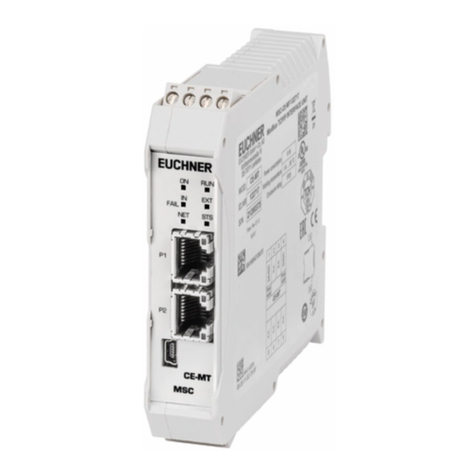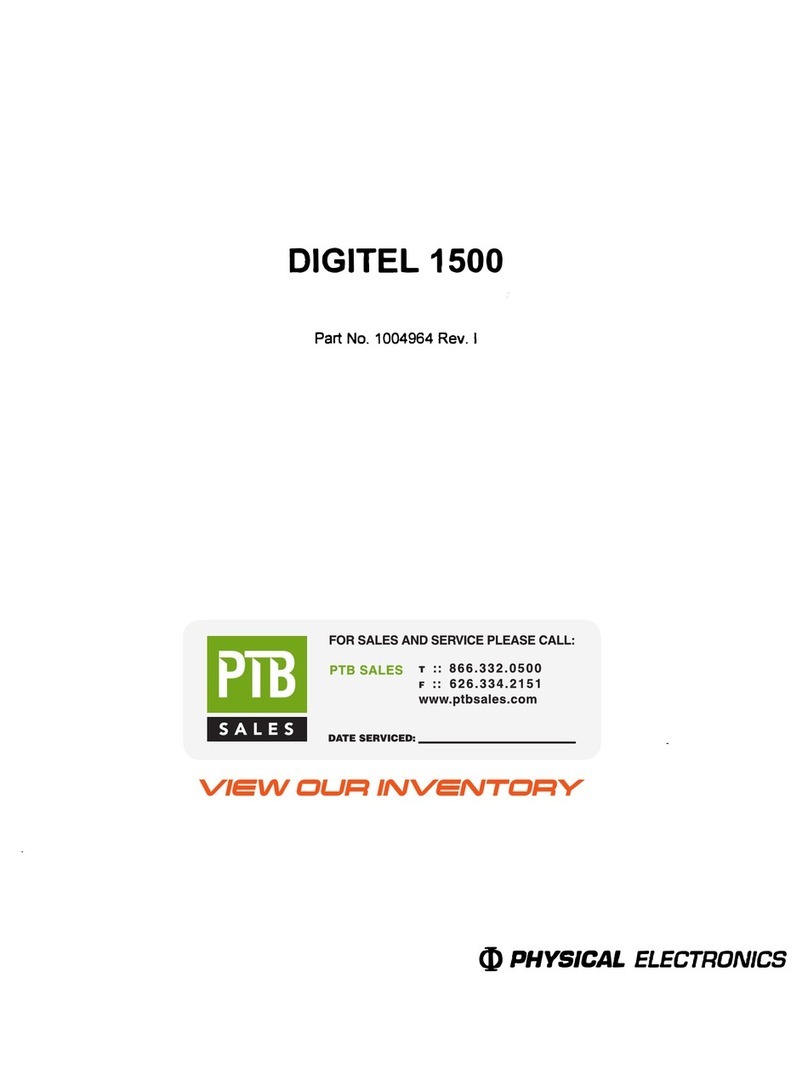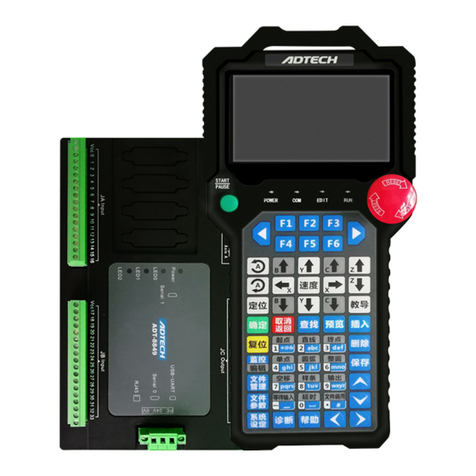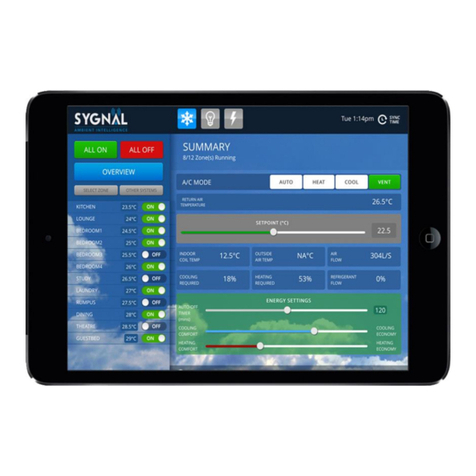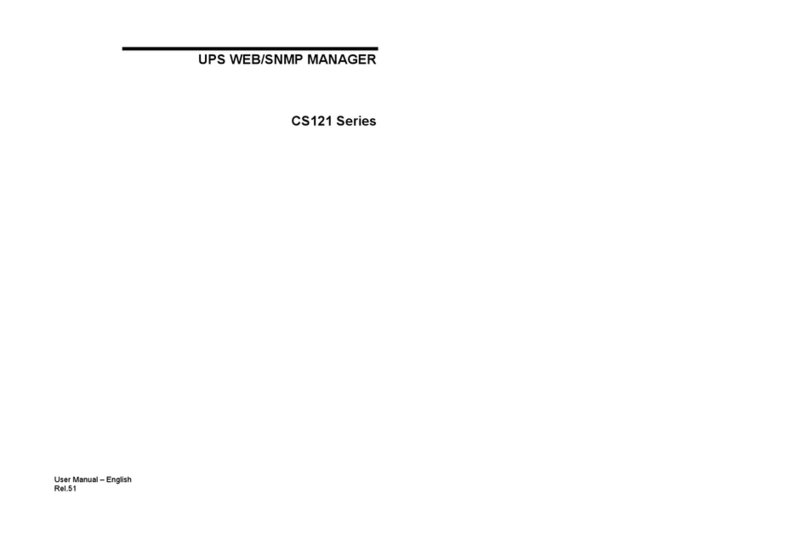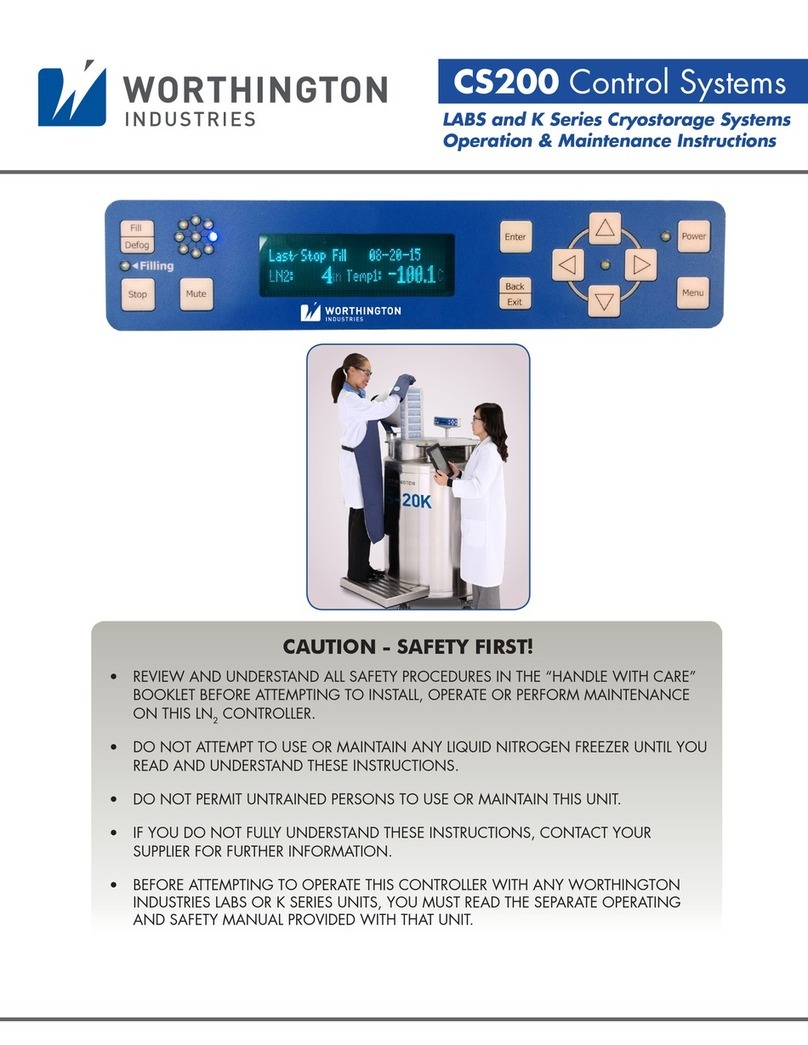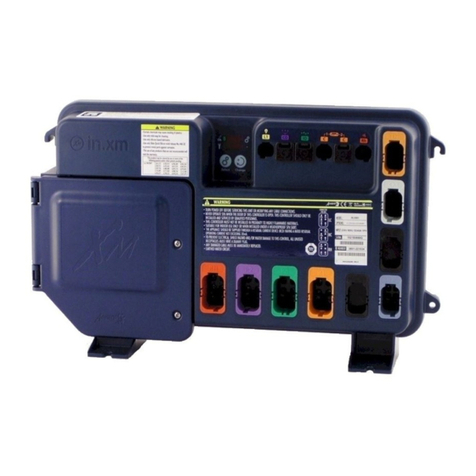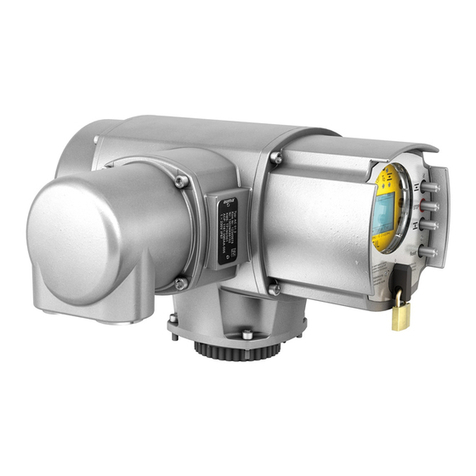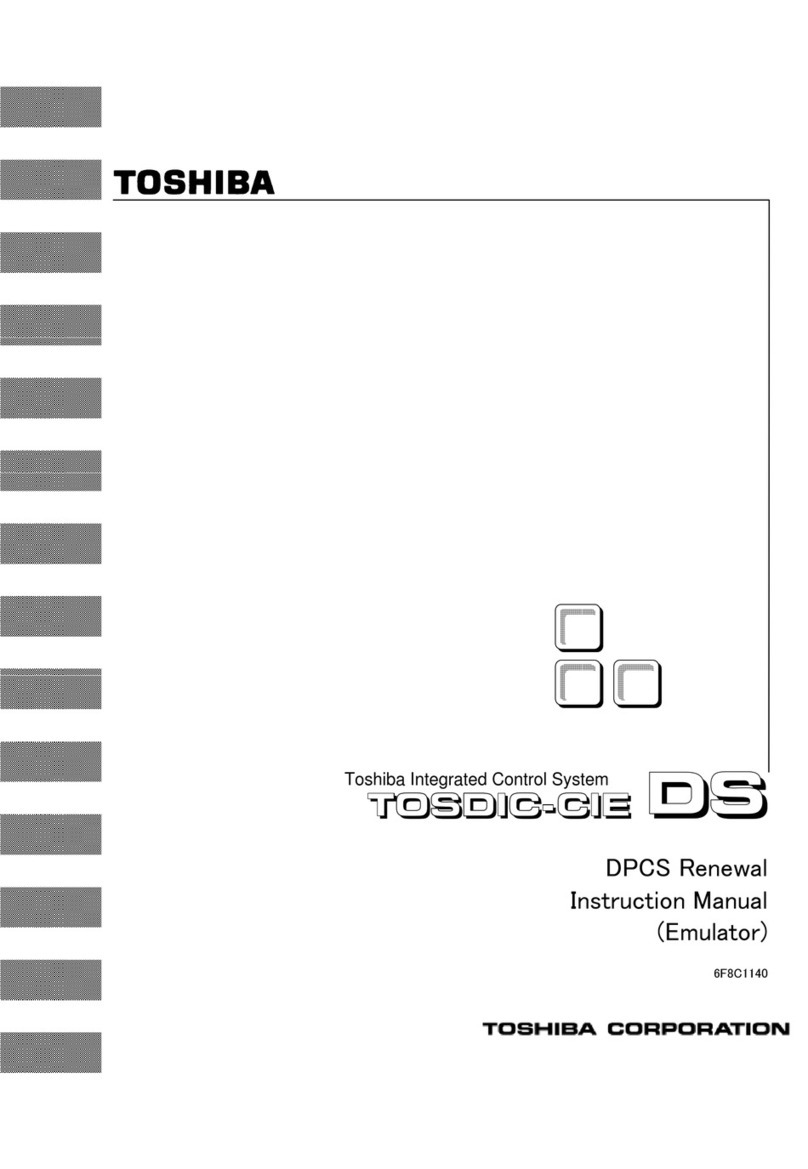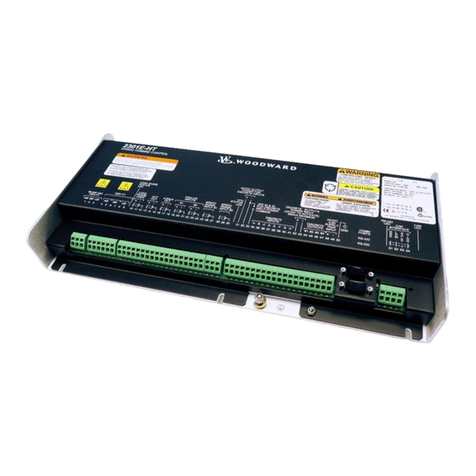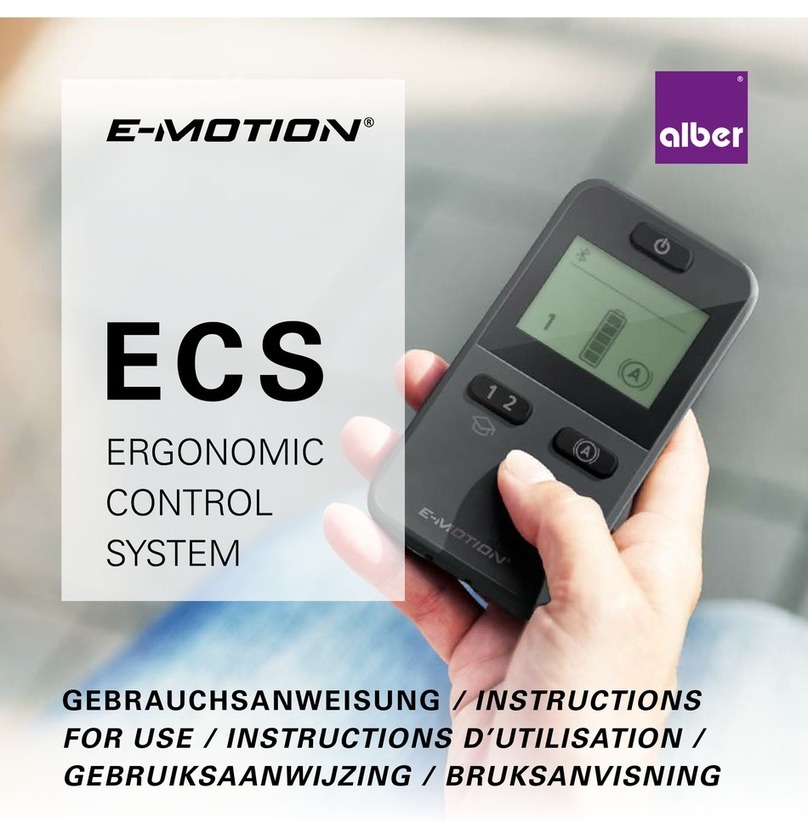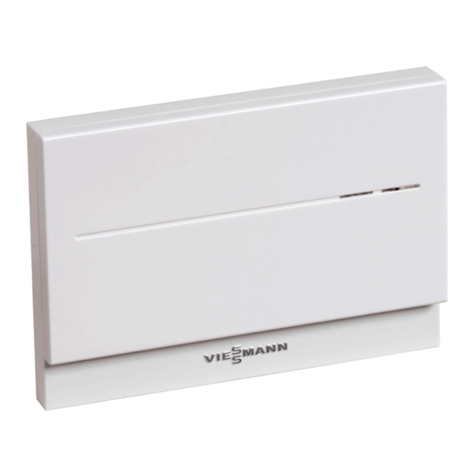Menvier Security TS2000 User manual

TS2000 (V2+) INTRUDER ALARM
CONTROL SYSTEM
USER MANUAL

TS2000 (V2+) User Manual
COPYRIGHT
Allrightsreserved.Nopartoftheinformationcontainedinthispublicationmaybereproducedorcopiedby
any means without the prior written permission of Menvier Security Ltd
© Menvier Security Ltd 1991
REVISION STATUS
ISSUE DATE PAGE DETAILS
01 Oct 91 All First Issue for S/W V2.0
02 Feb 92 2-6; 3-4/5; Minor typographical corrections
02 JUL 93 New Company Name
This document is for use with the TS2000 Intruder Alarm Control system fitted with software versions 2.0
and above (V2+) issued after October 1991. It should not be used with earlier versions of the TS2000
system.
It provides information on the Operation of the system.
Reference should also be made to the User Guide supplied with the system.
Menvier Security Ltd
Hither Green
Clevedon
Avon BS21 6XU
Tel: 0275 870 078
Fax: 0275 343 453
Tlx: 44782
Pt No: B.18006
Drg No:33:0059:01:ISS.02:DOC.02
Feb 92

TS2000 (V2+) User Manual
CONTENTS
1 OVERVIEW
1.1 Introduction Page 1-1
1.2 Equipment Page 1-1
1.3 Control Panel Options Page 1-1
1.4 Additional Equipments Page 1-2
1.5 Remote Data Transfer Page 1-2
Fig 1-1 Schematic Block Diagram Page 1-3
2 OPERATIONAL FACILITIES
2.1 Introduction Page 2-1
2.2 Control Page 2-1
2.3 Passcodes Page 2-1/2
2.4 Circuit Types Page 2-2
2.5 Attributes Page 2-3
2.6 Programmable Outputs Page 2-4
2.7 Wards Page 2-5
2.8 Timers Page 2-5
2.9 Modes Page 2-6
2.10 Omitting Circuits Page 2-7
2.11 PSU Monitoring Page 2-7
2.12 Other Facilities Page 2-7
3 SYSTEM MENUS
3.1 Introduction Page 3-1
3.2 Setting the System Page 3-1
3.3 Setting Wards Page 3-1
3.4 Unsetting the System Page 3-2
3.5 Unsetting Wards Page 3-2
3.6 View Circuits Page 3-2
3.7 View Event Log Page 3-2
3.8 Select Walk Test Page 3-2
3.9 Select Bell Test Page 3-2
3.10 Omit/Enable Circuits Page 3-2
3.11 Use Chime Facility Page 3-3
3.12 Use the Printer Page 3-3
3.13 Alter Clock Page 3-3
3.14 Alter Passcode Page 3-3
3.15 Define Users Page 3-3
3.16 Alter Time Switch Page 3-3
3.17 Alter Time Lock Page 3-4
3.18 Define Circuits Page 3-4
3.19 Define Outputs Menu Page 3-4
3.20 Review Wards Page 3-4
3.21 Define Wards Alarms Page 3-4
3.22 Define System Timers Page 3-4
3.23 Define Panel Modes Page 3-5
3.24 Use Test Options Page 3-5
3.25 Use Network Options Page 3-5
3.26 Define Circuit Text Page 3-6
3.27 Install DC3 Page 3-6
3.27 Reset by Remote Page 3-6
Fig 3-1 Menus Listing in sequence Page 3-7
continued

TS2000 (V2+) User Manual
4 OPERATING THE SYSTEM
4.1 Introduction Page 4-1
4.2 Set System & all AvailableWards (w/o WCU)Page 4-2
4.3 Set System without Wards Page 4-2
4.4 Set System/Wards (w/o WCU) Cts Omitted Page 4-3
4.5 Set Wards Circuits Omitted Page 4-3
4.6 Set System/Wards (Wards set) Page 4-4
4.7 Set System/Wrds (Wards set) Cct Omitted Page 4-4
4.8 Set more Wards (Wards set) Page 4-4
4.9 Set more Wards (Wards set) Cct Omitted Page 4-5
4.10 Unset Wards Ccts not Omitted Page 4-5
4.11 Unset Wards Ccts Omitted Page 4-6
4.12 Omit Circuits Page 4-6
4.13 Clearing Circuits Omitted Page 4-7
4.14 Set/Unset Wards with Keys Page 4-7
4.15 Unsetting the system Page 4-7
4.16 Unsetting the System (Alarm present) Page 4-7
5 PROGRAMMING THE SYSTEM
5.1 Introduction Page 5-1
5.2 View Circuits Page 5-2
5.3 View Event Log Page 5-2
5.4 Select Walk Test Page 5-2
5.5 Select Bell Test Page 5-3
5.6 Omit /Enable Circuits Page 5-3
5.7 Chime Facility Page 5-4
5.8 Use the Printer Page 5-5
5.9 Alter Clock Page 5-6
5.10 Alter Passcode Page 5-6
5.11 Define Users Page 5-7/8
5.12 Alter Time Switch Page 5-9
5.13 Alter Time Lock Page 5-10
*5.14 Define Circuits Page 5-11
*5.15 Define Outputs Page 5-12
*5.16 Review Wards Page 5-12
*5.17 Define Ward Alarms Page 5-13
*5.18 Define Timers Page 5-13
*5.19 Define Panel Modes Page 5-14
*5.20 Use Test Options Page 5-15/16
*5.21 Use Network Options Page 5-16/17
5.23 Define Circuit Text Page 5-17
*5.24 Install Digicom (and Modem) Page 5-18/19
5.25 Reset by Remote Page 5-19
* These menus are for the Engineer only (see Fig 3-1) but are included for reference
6 DICTIONARY Page D1/3
7 FORMS
System Options
Records of Circuits
Records of Outputs

INTRUDER ALARM CONTROL SYSTEM TS2000 (S/W V2+)
1 OVERVIEW
1.1 Introduction
The Intruder Alarm Control System TS2000 is provided for large domestic and general
commercialintruder systems conformingto BS 4737part 1 1986.It is anextremely versatile
system with the following facilties:
(1) Will monitor up to 128 zones using various types of detector device;
(2) Will provide up to 136 output signals whose response may be programmed;
(3) Maybeprogrammedtoprovidealargenumberofoperationaloptionsandfacilties;
As the system is microprocessor controlled it must be programmed initially to select the
required user options such as number of zones, type of alarm and time of operation.The
general principle of operation is to monitor protected zones, each having a detection circuit,
todetectthe circuit status, then torespondaccordingly. As each zone hasacircuitthe terms
Zone and Circuit may be considered as being synonomous but the term circuit is generally
used. Circuits may also be grouped into Wards (para 2.6).
1.2 Equipment
The system consists of a number of units that are interconnected by a Control Network:
(1) Control Panel (CP): This is the controlling panel for the system which:
(a) provides power to the system;
(b) communicates with and monitors the state of the units connected to the
Control Network and responds to alarm conditions according to the
pre-programmed instructions.
(c) provides special outputs to a printer, a Digital Communicator a Modem and
other devices if required;
It has no front panel controls and may be sited at any convenient internal location.
(2) NodeUnit(NU):aunitthatisremotefromtheCPandisconnectedtoitviatheControl
Network.It will monitorthe status of upto four circuits andwill also provideup to four
programmable outputs which are controlled by the CP;
(3) RemoteKeypadNodeUnit(REM): has the same functions as theNUandinaddition
hasaKeyboardanda40characterDisplaytoallowoperatorstocontrolthesystem;
The system will consist of a CP connected, via the Control Network, to up to 32 NU and or
REMsoprovidingupto128circuitsandalarmoutputseachofwhosefunctioninganduseare
pre-programmed. At least one REM is required to control the system.
1.3 CP Options
1.3.1 Additional boards may be fitted to the CP as follows:
(1) Serial Interface Board (SIB): Provides a serial output :
(a) RS232 format for a serial printer;
(b) RS232 format to any suitable equipment;
(2) Parallel Interface Board (PIB): Provides up to eight output ports which may be
programmed to respond to system activity and which can also be used to provide
outputstoaseparateDigitalCommunicator.Italsohasa(telephone)LineFaultinput
port.
(3) Digital Communicator type DC3 (Digicom): Will transfer status information from the
CPtoadedicated Central Station via PSTN lines. Whenactivatedviaanyofits eight
logic input channels it will:
(a) Dial one or two telephone numbers;
(b) Transfer an account (identity) number to the dialled station;
(c) Transfer status information.
Issue 02 Feb 92
TS2000 (V2+) User Manual
Page 1 - 1

(4) Modemtype DC3M(Digimodem):Willtransfer dataoverPSTNlinestoandfromany
suitableequipmentsuch asacomputerterminal.When activated thesystemwilldial
one or two telephone numbers and will be capable of transferring all commissioning
information, Event Log data etc to and from a remote maintenance centre.
1.4 Additional Equipments
1.4.1 WardControlUnit(WCU):Whenfitted it will allow a group of circuits, which aredesignateda
Ward,tobeSetandUnsetusingExitandEntryroutesseparatefromthesystem.TheWCUis
connectedtotheoutputsandcircuitsofaNUorREMandwillrequireaseparate12Vsupply.
1.4.2 Printer: An Epson printer P40-S may be connected temporarily to the CP or to the SIB to
provide printout records. Other printers that accept RS232 serial data may be permanently
connected to the SIB if permanent records are required.
1.4.3 Power Supply Unit: All power can be supplied from the TS2000 CP internal Power Supply
Unit but in large systems it may be necessary to fit additional power supply units. The PSU
150 has been designed for use with the TS2000 system and consists of a PSU and battery
(suppliedseparately) and it may alsohavea Node Unit andaRelay Unit (para 1.4.6) fittedin
its enclosure.
1.4.4 Output Modules: If remote indicators or mimic Panels containing LEDs are required then
Output Modules (OM) type CPA6.OM may be connected to the CP. Each OM unit will drive
uptoeightLEDsandthe units may be interconnected for large displays. The systemmaybe
programmed so that the LEDs indicate circuit condition or alarms and ward status if wards
are programmed. A separate 12V supply will be required.
1.4.5 ExtensionLoudspeakers: The REM contains asmallsounder unit to provideanindication of
the system status. If the volume of the sounder is insufficient (eg a louder exit sound is
required) then an extension speaker may be fitted to the NU and this will require a
LoudspeakerDriveUnittypeLSD1tobeconnected between the NU and the loudspeaker. A
separate 12V power supply will also be required.
1.4.6 Relay Unit: The NU and REM programmable outputs will provide current limited drive for
variousfacilitiesbutinmanycasesitwillbenecessarytoisolatethesystemfromtheexternal
equipment by driving via relays. Relay Units type RM3A provide two relays, which may be
energised by NU or REM outputs, and which provide two sets of 'clean' change over
contacts. The unit may be fitted separately or in a PSU150 case (para 1.4.2).
1.5 Remote Data Transfer
When fitted with a Digimodem type DC3M the system may be programmed and log data
transferredtoaremote location using a dedicatedprograminstalledinaPersonalComputer
at that location. The use of this faciltity is protected by a series of passscodes and user
menus.
Issue 02 Feb 92
TS2000 (V2+) User Manual
Page 1 - 2

Issue 02 Feb 92
TS2000 (V2+) User Manual
Page 1 - 3
* = Option
CONTROL
PANEL
Node
or
Remote Keypad
No 1
Node
or
Remote Keypad
No X
Remote
Power
Supply Unit*
Other Option Outputs
Detection
Circuits
C001 - C004
Programmable
Outputs
S001 - S004
Programmable
Outputs
S005 - S008
4 Output
Circuits
for WCU
Detection
Circuits
C125 - C128
Programmable
Outputs
S125 - S128
Mains input
240V 50Hz
Control Network Cable
Control Network Cable
Mains
input
12V i/p
Control Network Cable
Cable: 6 or 8 core 7/0.2mm2min.
Max length 100m between units.
Programmable
Option Outputs
Distance between Nodes/Keypads must be less than 100m.
Distance between Control Panel and last Node/Keypad must be less than 1km
Node
or
Remote Keypad
No 32 (max)
PSTN Lines*
Node
or
Remote Keypad
No 2
Ward
Control
Unit*
Exit/Entry
Circuits
3 Detection
Circuits
for WCU
Detection
Circuits
C005 - C008
12V o/p
Control Network Cable
Fig 1 - 1 TS2000 Schematic Block Diagram

2 OPERATIONAL FACILITIES
2.1 Introduction
2.1.1 The system operates in two states which may be considered as 'Monitoring', when the
systemrespondstocircuitactivations,and'OperatorControlling'whichrequirestheoperator
to enter a passcode and to operate a REM keypad.
2.1.2 Monitoring: The system may be 'Unset' when it monitors the circuits designated 24 Hour,
Personal Attack, Auxiliary, Fire, Medical and Exit Terminator circuits or any Tamper
activation, or it may be 'Set'when it monitors all the circuits connected to it and provides full
alarms if a circuit is activated.
2.1.3 OperatorControlling:Thesystem continues to monitor butmaybeoperatedbytheEngineer
orbya User after entering the appropriatePasscode.Normallythemain User actions will be
to Set or Unset the system but other controlling actions using the Menus of operations are
also available depending upon the level of passcode used. The Engineer is required to
programme the System, using the Menus, and may also set the system for test purposes.
2.2 Control
2.2.1 Onceapasscodehasbeenenteredallkeypadentries,oftenconsistingofasinglekeyentry,
or other actions, such as leaving the premises after setting the panel, are made in response
to questions or comments shown on the display. Following the displayed comments will
provide full operating instructions and this is supplemented by a series of Help messages
which provide further operating instructions.
2.2.2 The REM displays will normally show the system status followed by the present date and
time, or date and time that the displayed event occurred as follows:
(1) Date: Day Month Year (abbreviated)
(2) Time: Hours Minutes seconds (in 24 hour clock format).
When the time is being updated (seconds changing) the next keyboard entry should be a
passcode.
2.2.3 When controlling the system, the display prompts asking for <YES> must be followed by
pressingtheYesorNOkey.Ifacursor(<or>)isdisplayedthenthefollowingrulesapply:
(1) Press YES to accept the information indicated;
(2) Press NO to change the information indicated;
(3) Press the up arrow ( ) to increase the value indicated or go to the next step;
(4) Press the down arrow ( ) to decrease the value indicated or to go back a step;
(5) Press0(zero) to enter 0whenpointingatanumber or to endthesequencewhennot
pointing at a number;
(6) Press numerals to change the number indicated or to select Menus 1 to 9;
(7) PressHELPtoobtaindisplayedinformationonwhatactionto takenext.PressHELP
again to restore the display.
2.2.4 When using a keypad at a REM the display and the keypad are automatically illuminated.
When a REM is being used the displays at any other REMs connected to the system will
show 'System in Use' and all other keypads will be inhibited.
2.2.5 If at any time there is doubt about the action to be taken use the HELP facility or press 0,
which may be considered as an end key, until the display asks for YES and provides an
escape from the menu.
2.3 Passcodes
2.3.1 There are seven types of passcode each consisting of a four or six digit number and 52
passcodesmaybeallocated, one each for the Engineer andMasterUserandtheremainder
shared between passcode levels 3 to 6. The passcodes allow different levels of operation to
be carried out and are defined as:
(1) Engineer;
Issue 02 Feb 92
TS2000 (V2+) User Manual
Page 2 - 1

(2) Master;
(3) Manager;
(4) Standard S (system);
(5) Standard W (ward);
(6) Restricted;
(7) Not Used;
The highest level is (1) and the lowest is (6) so that the Engineer can carry out nearly all
operations but the Manager can only carry out the operations allocated to passcode levels
Manager, Standard and Restricted (Fig 3-1). The last passcode (7) will not allow access to
the system.
2.3.2 Passcodes are used as follows:
(1) Passcode Engineer: This unique code is used by a person nominated as the
Engineerwhoisnormallythepersonwhocommissionsthesystem.Itpermitscertain
special functions and operations to be carried out, which are not available to the
other passcode users, but the Engineer's passcode will only be accepted when the
SystemandWardsareunset.Whenusedandoperatingin certainmenusthealarms
are inhibited. The default value of this passcode is 1234.
(2) Passcodes Master; Manager; Standard and Restricted: These are initially allocated
tothe usersofthesystem bytheMasterUser.DefaultvaluefortheMaster passcode
is 5678; the others are undefined.
2.3.3 When entering a passcode each keystroke is acknowledged by a 'beep' and an arrow is
displayed.Ifamistakeismadewhenenteringapasscodeitisonlynecessarytowaituntilthe
display returns to its original state and then to start again.
CAUTION: If an incorrect passcode is entered more than six times the system will recognise this as a
Keypad Tamper alarm and will respond by displaying KEY PAD TAMPER and the sounder
willoperateuntilthecorrectpasscodeisentered.Enteringapasscodewiththefirsttwodigits
reversed will be recognised as a Duress Alarm (DA) hence these two digits must always be
different unless the DA facility is to be disabled.
2.4 Circuit Types
2.4.1 Each circuit is configured and programmed as a certain Type and this determines how the
system will respond to the circuit activation. A system response will always occur,
irrespective of the circuit type, if a circuit Tamper (open circuit or short circuit) condition is
present. The types are:
(1) Night: monitored when the system or ward is Set and if activated will generate a full
alarm but which is not monitored when the system or ward is Unset;
(2) 24Hour:continuouslymonitoredandifactivatedwillgenerateafullalarm during Set
and a local alarm only during Unset;
(3) Personal Attack (PA): two circuits which are continuously monitored and are
designated Silent PA and Audible PA respectively. When activated they will always
generate a full alarm;
(4) FireSensor (FS):continuouslymonitored andwillnormallybeconnectedtoa smoke
or heat detector. When activated it initiates the local sounder fire tone;
(5) Medical Input (MED): continuously monitored and if activated will enable
programmed Medical Outputs;
(6) Auxiliary Input (Aux): continuously monitored and if activated will enable the
programmed Auxiliary Outputs;
(7) Last Exit (Lt-Ex): a circuit which is monitored during the Setting process and when
activated by the User leaving the protected premises completes the Setting or
activates the Exit Terminator. It is also monitored when the system is Set and when
activated, normally by the User re-entering the premises, it initiates the entry
sequence (paras 3.2, 3.4);
(8) Exit Terminator (Ex-Tr): continuously monitored and which:
Issue 02 Feb 92
TS2000 (V2+) User Manual
Page 2 - 2

(a) When momentarily activated during Setting, after use of the Last Exit, will
completetheSettingprocessifithasbeenprogrammedtodoso(para3.2);
(b) If activated momentarily during Timed Setting it will truncate the time and
immediately complete the Setting process (para 3.2);
(c) When activated at any other time it will generate a chime like a door bell;
(9) Moment Ward Key (WD KY): continuously monitored and when momentarily
activatedwillinstantlySetadesignatedWardorUnsetitifitisalreadySet(para3.3);
(10) Box Tamper (TA): continuously monitored and if activated will indicate a Tamper
Alarm as follows;
(a) Tamper Alarm displayed;
(b) If the system is Unset it will sound local sounders;
(c) If the system is Set it will sound alarms after any Bell Delay;
(d) Will activate any programmed Tamper Outputs;
(11) Spare Circuit: the circuit is not recognised as existing;
(12) Security Key: continuously monitored and if momentarily activated will disable all
REMontheNetworkiftheyareenabledorwillenableallREMiftheyaredisabled
(13) Latch Ward Key (WD KY): continuously monitored and while activated (circuit
closed)willinstantlySetadesignatedWardandwhilenot activated(circuitopen)will
unset the Ward (para 3.3);
(14) PSU Mains: continuously monitored and when connected to a remote PSU Supply
Fault line (para 2.11) the circuit will monitor for a loss of mains exceeding the mains
off delay period (para 2.8.1);
(15) PSU Fuse: continuously monitored and when connected to a remote PSU 12V Fail
line will monitor for a loss of the 12V supply (para 2.11);
(16) PSUBatt: continuouslymonitoredandwhen connectedtoaremotePSUBattLoline
wiil monitor that the battery voltage exceeds about 10.5V (para 2.11);
(17) Ward Control: continuously monitored and is required when a Ward Control Unit
(WCU) is fitted to provide WCU status to the CP.
2.5 Attributes
2.5.1 Circuits irrespective of type may be allocated certain Attributes as follows:
(1) PowerReset(Rst):maybeallocatedtoallcircuits.Thisattributewillcausethecircuit
to be momentarily isolated during the setting process so that devices that may have
latched when activated will be reset to the inactive state before being monitored;
(2) Omit (Omit): may be allocated to all circuits and will allow the User to omit the
particular circuit when Setting (para 3.10);
(3) Invert (Inv): may be allocated to all circuits and will change the method of activation
from normally closed contacts to normally open;
(4) DoubleKnock(D-K):MaybeallocatedtoNightand24hourcircuitsandisintendedto
prevent false alarms. Circuits with this attribute must be activated, or have two
alarms present, during a period which is preset by the Engineer. If more than five
circuitswiththis attributeareactivatedatthe same timetheDoubleKnockperiod will
be truncated and this will cause an immediate alarm;
(5) Access(Acc):maybe allocated to night circuits that areontheentryaccessroute so
that accidental activation during the Entry procedure will have no effect.
2.6 Programmable Outputs
2.6.1 The programmable outputs from the NU and the REM, are referred to as the Node outputs
and are activated to respond to various conditions or events. They are programmed to
respond to System, Ward or Circuit activation.
2.6.2 PaneloutputsarefromtheCPandareprogrammedtorespondinthesamewayastheNode
Outputs. Outputs 1 to 8 are from the Parallel Interface Board, if fitted, and 9 to 16 are for the
DC3 or DC3M Digicom if fitted.
2.6.3
Issue 02 Feb 92
TS2000 (V2+) User Manual
Page 2 - 3

The System Activated Outputs may be allocated to any Node (NU or REM) output or the
Panel (CP) outputs. They are designated by their function and may be programmed to be
active if required. The following are available:
(1) Alarm: A system alarm is present (para 2.1);
(2) P.A.: A Personal Attack circuit or a Duress Alarm has been activated (para 2.4);
(3) Set: The system is set (para 3.1.2);
(4) Fire: A Fire circuit has been activated (para 2.4.1);
(5) Medical: A Medical circuit has been activated (para 2.4.1);
(6) Tamper: A Tamper alarm is present (para 2.4.1);
(7) Aux: An Auxiliary circuit has been activated (para 2.4.1);
(8) Set Fail: An attempt to set the system has failred (para 3.2);
(9) SiteEngr:TheEngineer'spasscodehasbeenentered.Theoutputwillremain active
until a User passcode is entered (para 2.3.1);
(10) Lock-Alarm: The system has not been set before the start of the Time Lock period
Para 3.17);
(11) Test-Fail: A test failure has occurred (para 3.24);
(12) AC Alarm: The mains supply to the PSU has not been present for the mains fail time
period Para 2.11);
(13) AC Off: The mains supply to the PSU is not present or there is no 12V output (para
2.11);
(14) BattFault:DuringthePSUtestorwhilethemainsisoffthePSUbatteryvoltageislow
(para 3.11);
(15) Bell: The CP bell output (Relay) is activated (bells ringing);
(16) Strobe: The CP Strobe output is activated (strobes on);
(17) Switch+12: The system is Set and is not in alarm;
(18) Walk Test +: A Walk Test is in progress (para 3.8);
(19) Walk Test -: A Walk Test is in progress (para 3.8);
(20) Line Fault: A Digicom telephone line fault is present (para 1.3.1);
(21) Time Switch: The programmed Time Switch (para 3.16) is active;
(22) TimeLocked:ThesystemhasbeenTimedLocked(para3.17)andcannotbeunset;
(23) Entry Mode: Entry mode has been initiated (para 3.4);
(24) 2nd Entry: The first Entry Time has timed out before a passcode entry (para 3.4);
(25) Exit Mode: System exit procedure has been initiated (para 3.2);
(26) Exit Setting; Final Exit setting is in progress (para 3.2) ;
(27) Exit Error: An error occurred during the exit procedure and the system cannot set
(para 3.2);
(28) Lock Alert: The programmed Time Lock period is about to start (para 3.17);
(29) Fire/Viper: Used to supply devices which latch when activated and which are
unlatched when power is removed. The output is removed for about three seconds
when unsetting the system after an alarm at the second passcode entry;
(30) PSU Test: Connected to remote PSU to initiate a battery test (para 2.11).
CAUTION: It is essential to ensure that the correct outputs that will source (supply) or sink (accept)
current are selected to match the function required.
2.6.4 TheWardactivatedoutputsmaybeprogrammedtobeactiveifrequiredandthefollowingare
available:
(1) Set: The relevant ward has been set (para 3.3);
(2) Set Fail: An attempt to set the relevant ward failed (para 3.3);
(3) Alarm: The relevant ward is active or in alarm;
(4) Walk Test +ve: The relevant ward is in Walk Test (para 3.8);
(5) Walk Test -ve: The relevant ward is in Walk Test (para 3.8);
Issue 02 Feb 92
TS2000 (V2+) User Manual
Page 2 - 4

(6) Exit: The relevant Ward (with WCU) exit procedure has been initiated (para 3.3);
(7) Entry:TherelevantWard(withWCU)entryprocedurehasbeeninitiated(para3.4);
Ward outputs (1), (2), (3) and (6) above must be programmed and connected to the WCU if
one is fitted.
2.6.5 Thecircuitactivatedoutputsmaybeprogrammedifrequiredandthefollowingareavailable:
(1) Alarm: The relevant circuit is active;
(2) Tampered: The relevant circuit is open or short circuited;
(3) Test Fail: The relevant circuit is on test and is active (para 3.24);
(4) Chimed: The relevant circuit is required to chime (para 3.11);
(5) Omitted: The relevant circuit has been omitted (para 3.10);
(6) On Test: The relevant circuit is on test (para 3.24);
(7) Mimic: The relevant circuit is not healthy;
(8) Error: The relevant circuit was not healthy when attempting to Set or was activated
during a Walk Test.
2.7 Wards
2.7.1 WardsaregroupsofcircuitsanduptoeightWardsmaybedefinedbycircuitsbeingallocated
tothem.TheWardsmaybeinsidethesystemandcontrolledfromanyREMorWardKeyor,if
fittedwithaWCU,theymaybeseparatewiththeir ownREMandExit/Entrydevices.Exitand
Securitycircuits cannotbein aWard(theexitisarrangedby theWCU).Night circuitsmaybe
inmorethanoneWardbutallothercircuitsmaybeinoneWardonly.Circuitsnotallocated to
a Ward remain in the System. Wards may only be Set or Unset by the Users programmed to
do so (menu 12) or by Ward Key holders.
2.7.2 Once Wards are defined they may be controlled to Set and Unset separately by:
(1) Using a passcode and commanding them to Set or Unset at a REM;
(2) Using a passcode and the Ward exit or entry procedures if a Ward Control Unit
(WCU) is fitted;
(3) If a circuit type Ward Key (para 2.4) is allocated then activation of this circuit will Set
or Unset the Ward allocated;
(4) WhenthesystemisUnsetbyauserthenanyWardsthataresetwillalsobeunset.
2.7.3 If both the Wards and the System are required to be set then this may be done at a REM by
selectingWardsandsettingthemandthensettingthesystembytheprogrammedmethods.
2.8 Timers
2.8.1 Anumber of timers adjustablefrom 01 seconds to999 minutes and withan accuracy of +/-1
second, which are set by the Engineer, are available to control certain functions. The timers
are designated by the times they control as follows:
(1) BellDelay Time: This is thedelaytime before ouputs designatedasBell outputs and
the panel sounder are activated when an alarm occurs. If the CP has a Digital
Communicator fitted and it detects a line fault then the Bell Delay is cancelled.
Default value is 5 minutes;
(2) Bell Duration Time: This is the duration of time of the Bell and Sounder activation
when an alarm is present. Default value is 20 minutes;
(3) System Exit Time: Is a period of time allowed for leaving protected premises when
systemsetting is initiated by timingandduring this period thenightcircuit alarms are
inhibited. An alarm will occur if the system is not Set within this period. Default value
is 25 seconds;
(4) ExitSettlingTime: Isaperiodoftime allowed forthesystemtosettle attheendofthe
Exit time, or operation of the Last Exit or Exit Terminator, so as to prevent false
alarms at Setting. Default value is 05 seconds;
(5) FirstEntryTime:Isthe period of time allowed for enteringprotectedpremisesviathe
entryroutewhenthesystemisSetorPartSetandduringthisperiodtheLastExitand
Night circuits with Attribute Acc (para 2.5 (5)) are inhibited. Default value is 30
seconds;
(6)
Issue 02 Feb 92
TS2000 (V2+) User Manual
Page 2 - 5

Second Entry Time: Is an additional period of time allowed for entering protected
premises that is activated after the First Entry Time has expired during which limited
alarms will be activated. Default value is 30 seconds;
(7) CommunicatorDelayTime:ThisisthedelaytimebeforetheDigitalCommunicatoris
activated when a Ward Alarm occurs which is not required to be communicated
immediately. Default value is 1 minute 30 seconds;
(8) LightsOffDelay:ThisisthedelayperiodbeforetheREMkeyboardanddisplaylights
are de-activated when leaving the Menu. Default value is 05 Seconds.
(9) Mains Off Time: This is the time delay period before an alarm is generated when the
mains supply fails. Default value is 10 Seconds;
(10) Menu Time Out Time: This is the period of time allowed before the system reverts
from Menu to Unset if a Keyboard entry is not made. Default value is 1 minute 30
seconds;
(11) Double Knock Time: This is the length of time during which two activations of the
circuitmust occur, orfor which theactivation must remain,to initiate analarm from a
circuit with Attribute D - K (para 2.5.1). Default value is 10 seconds;
(12) Line Fault Time: This is the time delay period before an alarm is generated if a
Digicom Line fault occurs. Default value is 20 seconds.
2.9 Modes
2.9.1 The system Modes of operation determine how the system will operate under various
conditions and these are programmed by the Engineer. For Wards with a WCU the Exit
options are set at the WCU. The following Modes may be defined:
(1) Exit
(a) Timed Exit: When setting an exit sequence is started at a REM and the
system will set after a fixed period, determined by the Exit Timer (para 3.8),
by the end of which all monitored circuits must be healthy to ensure that the
system will set. The User may leave the premises during this period without
causinganalarm.WhenappliedtoaWardwithaWCUitissetattheWCU;
(b) LastExit:When setting an exit sequenceisstarted at a REM butthesystem
will only set when the circuit designated Last Exit, which is normally a door,
has been momentarily active;
(c) Exit Terminator: When setting the sequence in (b) above is followed but a
circuit designated Exit Terminator, which is normally a push button switch,
must also be momentarily active after the Last Exit activation;
(2) Remote Service: The Remote Data Transfer facilty (para 1.5) may be used at any
time without User control or it may require a User passcode before being allowed to
take place;
(3) Output Modules: If Output Modules, which are used to drive remote Mimic Panels
withLEDsor other devices, are connectedtheymay be set to mimicthecircuitsor to
show ward and circuit alarms (para 1.4.4);
(4) Personal Attack: During a Walk Test the PA circuits may be set to cause a test
activation or an alarm;
(5) User Setting System:The system may be allowed, or not allowed (barred), to set
when the following conditions are present:
(a) Digital Communicator line fault;
(b) Mains supply (AC) off.
(6) Time Lock: The Time Lock (para 3.17) is to be applied to the System or to Ward 1
only;
(7) Part Set: When the system is Set but Wards are not set (the premises are still
occupied) then if an alarm occurs the alarm condition may be sent sent via the
Digicom immediately or it may be delayed for the Communicator Delay period (para
2.8 (7)) to allow it to be investigated first;
Issue 02 Feb 92
TS2000 (V2+) User Manual
Page 2 - 6

(8) Re-arm:This may be set toAutoor to Manual. AutoRe-armmeans that at the endof
the Bell Duration period the circuit will repeat the alarm, if the alarm condition is still
present, or if it re-occurs. Manual re-arming will inhibit the circuit, once it has
generated an alarm, until the panel is reset.
(9) Reset:Ifanalarmoccursthesystemalarmconditionmaybereset by the User, or by
theEngineer,or remotely via atelephonelineandtheDC3M. If an EngineerResetis
required and the Engineer is not immediately available then the User may utilise the
Reset by Remote facility to phone for a special code number which will reset the
system (para 5.25);
(10) Codes: The passcodes may be set to require four or six digits. If set to six digits and
only four have been allocated then the last two digits are assumed to be zeros.
2.10 Omitting Circuits
2.10.1 Circuits may be omitted so that they have no effect when activated, unless a tamper is
detected, and this requires two actions:
(1) The circuit to be omitted must have the Attribute Omit (para 2.5.1) which is allocated
by the Engineer when commissioning the system;
(2) TheOmit/Enable circuitsmenu(7)must beusedtoArmorEnablethecircuitand this
may be done by suitable Users.
2.10.2 Assuming that the Engineer has previously allocated the Omit Attribute to selected circuits
then there two ways of activating the Omitted state:
(1) Directly access the Omit/Enable Circuits menu (7) and use it to select the required
omittedcircuits. This condition willbe indicated by 'CircuitsOmitted' being displayed
at the REM when the system is unset;
(2) Duringthe setting sequencethe User may goto the Omit/Enable Circuitsoption and
select circuits with Attribute Omit which are to be omitted.
The circuits that have been selected to be omitted will be re-instated when the system is
unset and circuits omitted when the system is unset will be re-instated when the system is
set.
2.11 PSU Monitoring
2.11.1 The main CP internal PSU is continuously monitored for loss of power and this facility may
alsobeextendedtoremotePSUs,iffitted,byusingcircuitstomonitorthePSUandanoutput
tocontrol the monitoring. Aloss of power willbe indicated at theREM as AC Failor Batt fault
and will also be logged.
2.11.2 ThePSUbatteryorbatteries are tested by isolating power foraboutaminuteeveryhourand
measuring the battery voltage whilst it is on load. If the voltage is below a certain value then
an alarm is indicated.
2.11.3 RemotePSUwillrequireuptothreecircuitstobedesignatedasPSUmonitorlines(para2.4)
andtobeconnectedtothePSUmonitorconnections.Anoutput(para2.6.3)designatedPSU
Test will also be required and connected to the PSU to initiate the test.
2.11.4 The PSU monitoring facility is inhibited during a timed test (para 2.12) to allow new batteries
to be charged wihout generating an fault.
2.12 Other Facilities
2.12.1 Time Switch: May be used to provide a pre-selected timed output with two On times and two
Off times and each may be allocated to operate on any number of days of the week.
2.12.2 Time Lock: May be used to restrict Setting and Unsetting the System or Ward 1 to certain
times.
2.12.3 Event Log: An electronic log which will retain up to 285 events and which can be viewed or
printed.
2.12.4 Walk Test: Allows the system and or individual wards to be tested by recording circuit
activation without annunciating the alarms.
2.12.5 Circuit Text: Each circuit may be allocated a line of text, pre-selected from a dictionary of
about 500 words or characters, so that the alarms will be indicated by the circuit name
instead of the circuit type.
Issue 02 Feb 92
TS2000 (V2+) User Manual
Page 2 - 7

3 SYSTEM MENUS
3.1 Introduction
A series of Menus are provided which determine all the actions that may be taken to
programmeor control thesystem. There aretwo entry pointsto the Menus,depending upon
whetheranEngineeroraUserpasscodeisentered,andtheMenusmaybesteppedthrough
sequentiallyusingthekeyboardupanddownarrowkeysoraccesseddirectlybyenteringthe
Menu number for Menu items 1 to 9 (Fig 3 - 1).
3.2 Setting the System
3.2.1 The System may be Set after entering a passcode and the process is a two stage sequence
as follows:
(1) Select the type of operation - what is to be set or omitted ;
(2) Activate the Exit procedure.
3.2.2 The setting sequence at a REM is:
(1) Omit circuits: Circuits that have been allocated the attribute Omit may be omitted by
passcodes Master and Manager and will not be set. They will be enabled when they
are unset unless unset by a key;
(2) Set Wards: Wards may be selected and set by the designated passcode users as
well as or instead of the system - see below;
(3) Set System: The system is Set using the programmed exit procedure;
3.2.3 Therearethree types of Exitprocedureusedwhensettingthe System or aWardthatisfitted
with a WCU:
(1) Timed Exit: the sequence is started and the System or Ward will set after a fixed
period, determined by the Exit Timer (para 3.8), by the end of which all monitored
circuits MUST be healthy to ensure Setting. The User may leave the protected
premises during this period without causing an alarm then after a further period,
determined by the Exit Settling Timer, the System or Ward will set ;
(2) Exit by Circuit: The Exit sequence is started but the System or Ward (with WCU) will
only set by the momentary activation of a circuit which may be:
(a) The circuit designated Last Exit which starts the Exit Settling Timer; OR
(b) TheLastExit followed byactivationofthecircuit designated ExitTerminator
which starts the Exit Settling Timer;
IneachcasefinalsystemsettingisconfirmedbytheREMorWCUsounderbeingsilenced.
3.3 Setting Wards
Wards may be selectively Set using a number of methods:
(1) At a REM enter a passcode, designate the Wards to be set then command them to
set and they will set immediately with no further action required. This will be the
procedure where the REM is inside the area protected by the System and not the
Ward and no WCU is fitted;
(2) WheretheWardhasaREMinsideit,itsownexitandentryroute,andaWCUisfitted,
thenafterenteringapasscodeattheREMtheExitprocedureisactivatedinthesame
way as for the System (para 4.2.3). The WCU sounder will indicate Ward setting is
complete;
(3) Operation of a Ward Key, if one is fitted, will set the relevant Ward
Issue 02 Feb 92
TS2000 (V2+) User Manual
Page 3 - 1

3.4 Unsetting the System
3.4.1 The System may be unset in a number of ways:
(1) Entry Procedure: This is normally initiated by using the access designated as the
Last Exit. This action starts the Entry Timer (para 2.8) and the Sounder will pulse at
an increasing rate. The User should complete the unsetting by going to a REM and
enteringapasscodewithinthefirstentrytime(para2.8)otherwiseaninitialalarmwill
sound and after the second entry time, if the passcode has not been entered, a full
alarm will occur. During the Entry procedure if any circuits with Attribute Acc (para
3.5) are activated they will not cause an alarm.
(2) Entering a Passcode; Entering a Passcode without the entry procedure will Unset
the System or Ward.
User level Restricted (6) cannot Unset the System.
3.4.2 Any circuits that have been omitted will be re-instated when the system is unset. Any wards
that have been set will be unset when the system is unset.
3.5 Unsetting Wards
3.5.1 Wards may be Unset by:
(1) Activation of the Ward Key circuit allocated to that Ward;
(2) Entering a Passcode and unsetting selected Wards at a REM;
(3) Using the entry procedure if a WCU is fitted;
(4) Unsetting the system.
OnlyUsers programmed to Unset aWard(menu 12) may doso.Any Ward circuits that have
been omitted will be re-instated unless the unsetting was done using a Ward Key.
3.6 View Circuits ( Menu 3)
Allows the state of each circuit to be inspected in turn and its type, or if it has text allocated
thenitstext, will be displayed also. Theresponseisdynamicso that a change ofstatewillbe
indicated if the relevant circuit is being displayed. Alarms are inhibited during this menu.
Onceselectedthecircuitsmaybescrolledthroughusingthearrowkeysordirectlyaccessed
by entering the circuit number.
3.7 View Event Log (Menu 4)
Allows the event log to be inspected starting with the most recent event that has occurred.
The log can contain up to 285 events. Once selected the events can be scrolled through
using the arrow keys or directly accessed by entering the event number.
3.8 Select Walk Test (Menu 5)
TheSystemandselectedWardsmaybeputintoWalkTestModesothattheactivationofany
circuit is only recorded and alarms are not annunciated. At the end of the test the activation
willbedisplayedsothatcircuitfunctioningcanbeverified.WardsthataresetcannotbeWalk
Tested.The number of circuits tested is logged on completion of the test.
3.9 Select Bell Test (Menu 6)
The Bell output, the Strobe Output and the REM sounders can be activated individually to
verify their operation;
3.10 Omit/Enable Circuits (Menu 7)
This allows circuits that have been programmed with the Attribute Omit to be selected as
omitted or enabled. The menu is only available if there are circuits with the Attribute Omit.
This allows:
(1) Whensettingthesystemorawardthecircuitsselectedwillbeomittedwithoutfurther
UseractionsoallowinglowlevelpasscodeUsersorWardKeyUserstoomitcircuits;
(2) When the system is Unset the omitted circuits will not be monitored;
Issue 02 Feb 92
TS2000 (V2+) User Manual
Page 3 - 2

Theomitted circuits willbe automatically enabledwhen the systemor relevant wardis unset
unless the ward is key controlled.
3.11 Use Chime Facility (Menu 8)
NightcircuitscanbeprogrammedtoChimewhenactivatedandthepanelisUnsetandthisis
done by:
(1) Selecting the circuits which are to chime when active;
(2) Selecting whether the system and or ward circuits are to chime and the ward
numbers if wards are selected;
Having selected which circuits can chime, then selected Wards of circuits or the System
circuits may be enabled or disabled to chime.
3.12 Use the Printer (Menu 9)
Systeminformation and a number oflogsare held by thesystemand these may be printedif
required as follows:
(1) Print All - all programmed information;
(2) Print Circuits - all Circuit configurations;
(3) Print Outputs - all Output configurations;
(4) Print Timers - all Timer settings;
(5) Print System Modes - All system mode settings;
(6) Print Ward Alarms - all ward alarms;
(7) Print Users - list of Users;
(8) Print Dictionary - all the dictionary text;
(9) Print DC3 data - all the DC3 or DC3M programmed data;
(10) Print Event Log - all the events logged;
(11) Cancel Printing - stop the printing sequence.
3.13 Alter Clock (Menu 10)
Thesystemcalender and clock may be changedwiththisfacility.To obtain an accurate time
set the clock in advance and press the final Yes (for seconds) at the correct time.
3.14 Alter Passcode (Menu 11)
This facility is for the Engineer and for any User except the Master so that they can enter a
new passcode for themselves. When entering a Passcode it must be entered twice for
verificationpurposes and thecorrectnumberof digits(4or6)must beentered.Ifanumber is
selected that is in use by another User it will not be accepted.
3.15 Define Users (Menu 12)
Thereare50PasscodeslotsavailableandeachmaybeallocatedoneofthePasscodeLevel
names (para 2.3) and a Passcode number. This menu allows the Master User to:
(1) Allocate the slots to a level of User ;
(2) Allocate passcodes to the Users including himself;
(3) Delete a User;
(4) Allocate which Wards may be Unset by which User;
(5) Allocate which Wards may be Set by which User;
3.16 Alter Time Switch (Menu 13)
A Time Switch function, which may be used to provide a pre-selected timed output, may be
programmedwith two On times andtwoOff times, designated Time1and Time 2, and each
may be allocated to operate on any number of days of the week. The time switches may be
Issue 02 Feb 92
TS2000 (V2+) User Manual
Page 3 - 3

used to enable Panel or Node outputs (para 2.6) at the times set and there is a manual
override facility.
3.17 Alter Time Lock (Menu 14)
The Time Lock is used to restrict Setting and Unsetting of the System or Ward 1 to certain
timessothattheymustbeSetbeforeacertaintimeandmaynotbeUnsetuntilafteracertain
time. A Warning Time, a Lock Time, and an Unlock Time may be defined and then allocated
to selected days of the week. Outputs associated with the Time Locks may also be
programmed (para 2.6.3). The Time Lock settings and their effects are:
(1) Lock Warning Time: Warns of a pending Lock time, when the System or Ward 1
should be Set, by operating the sounder;
(2) Lock Time: Terminates the Warning and prevents Unsetting if the System or Ward 1
is Set;
(3) Unlock Time: Enables the User to Unset the System or Ward 1.
3.18 Define Circuits (Menu 15)
Each circuit connected to the system must have its type defined (para 2.4), may then be
given Attributes (para 2.5) if required and then allocated to a Ward, or Wards, (para 2.7) if
required. Alarms are inhibited when this menu is in use.
3.19 Define Outputs (Menu 16)
Each output connected to the system is defined depending upon how it is to be used and
connected (para 2.6).The System, Ward and Circuit outputs may each be defined.
3.20 Review Wards (Menu 17)
This allows the Engineer to check which Circuits are allocated to which Wards but the menu
is only available if wards have been defined by having circuits allocated to them.
3.21 Define Ward Alarms (Menu 18)
IfWard1isSetandtheSystemisnotSetthenifaWard1alarmoccurssignallingofthealarm
via the Digicom, if one is connected, may be programmed as:
(1) Internal: provides a local alarm only and is not reported via the Digicom;
(2) Bells Only: provides a full alarm and is not reported via the Digicom;
(3) Instant: provide a full alarm and is reported via the Digicom immediately;
(4) Delayed: provide a full alarm but the reporting of the alarm via the Digicom will be
delayed for the period of the Communications Delay timer (para 2.8).
3.22 Define System Timers (Menu 19)
The system Timers (para 2.8) are set to the required values for the system. Timers that are
not altered will retain their factory default values.Timers are:
(1) Bell Delay time: time delay before external bells sound at an alarm;
(2) Bell Duration time: duration of bell operation at an alarm;
(3) System Exit time: time period of timed exit;
(4) Exit Setting time: time period for system to settle at exit;
(5) First Entry time: time period allowed for entry;
(6) Second Entry time: time period allowed if first entry time is exceeded;
(7) Communicator delay: time delay before Digicom operation;
(8) Lights Off delay: time delay before REM internal illumination turns off;
(9) Mains Off time: time delay before mains fail alarm;
(10) MenuTimeout:periodwithoutkeypadoperationbeforeautomaticexitfrommenu;
Issue 02 Feb 92
TS2000 (V2+) User Manual
Page 3- 4

(11) Double Knock time: time period of double knock window;
(12) Line Fault d: delay before line fault alarm.
3.23 Define Panel Modes (Menu 20)
The system Modes of operation (para 2.9) that are required are selected and allocated:
(1) Select Exit: by Time, by Last Exit or by Last Exit and Exit Terminator;
(2) Remote Service: Remote Data Transfer via the DC3M Digimodem may be at any
time or needs User passcode entry first;
(3) Output Modules: mimic the circuit function or show alarms;
(4) Personal Attack during Walk test: show as test activation or as an alarm;
(5) User Setting: allowed or barred with line fault present;
(6) User Setting: allowed or barred without AC (mains) present;
(7) Time Lock: facility applies to the System or to Ward 1;
(8) AlarminSystem:Digicomrespondsimmediatelyorisdelayedwhenpanelispartset;
(9) Panel Alarm mode: Re-arm to be automatic or manual;
(10) Panel Alarm Mode: Reset by customer or by engineer;
(11) Engineer and User codes: Passcodes to be 4 or 6 digits.
3.24 Use Test Options (Menu 21)
AnumberofTestfaciltiesareprovidedtopermitcircuitactivitytobemonitoredasfollows:
(1) Put circuit on or off test: A circuit put on test will have its normal alarm response
inhibited and any activation will only be logged and can then be viewed at a
convenient time. The circuit will remain on test until taken off test or if Timed Test is
selected until the timer expires or is cancelled;
(2) Start Timed Test: A circuit that has been put on test, as in (1) above, may have the
test period set for a selected number of days at the end of which it will automatically
reverttonormaloperation.Testingisterminatedatmidnightonthefinalday.Ifatime
of 00 days is selected the circuit will remain on test until the test is cancelled;
(3) Cancel Timed test: This allows a Timed Test to be cancelled before its normal
expiration time;
(4) Review System Failures: All test failures are recorded in a Test failure Log and this
allows the log to be inspected;
(5) ClearTestFailures:ThisallowstheTestFailurelogtobeclearedsothatnewfailures,
if they occur, may easily be seen.
(6) See Version: Will provide an indication of the software version and the dictionary
version fitted.
(7) Alter Reset Calculation: By entering a certain number the Reset by Remote facility
codes are restricted to selected locations.
3.25 Use Network Options (Menu 22)
The following actions concerning the Nodes and REMs may be carried out:
(1) Resetall Nodes: Thisgenerates an OnSite reset during whichthe number ofNodes
and REMs on the Network is checked. The number detected is displayed and if it is
notcorrectthecausemustbeinvestigated.Themostlikelyfaultis the end of line link
at a Node or REM is in the wrong position;
(2) ViewNodeCircuits: This provides adisplayofthestatusof each Node andREMand
each of its circuits. The circuits are indicated as Healthy (H) or Active (A) or Shorted
(S) or Tamper (T). Alarms are inhibited during this menu;
(3) InsertNewNode: If after installation anewNode or REM is requiredtobeadded this
procedure allows the installation without completely re-programming the system.
The general procedure is to power down the system (all programmed data is
retained) insert the new Node or REM, apply power then immediately use this
procedure to ensure that all Nodes and REMs are correctly addressed. The
procedure is not required if the Node or REM is inserted at the end of the network as
Issue 02 Feb 92
TS2000 (V2+) User Manual
Page 3 - 5

this will be indicated by changing the end of line links at the old end unit and the new
unit,alsothe systemwillnotneedto re-number allunits,circuitsandoutputs. Having
installed a unit the circuits and outputs will need to be programmed;
(4) Delete Node: This procedure is the same as installing a Node or REM except that
the unit is removed instead of being installed.
3.26 Define Circuit Text (Menu 23)
Each circuit may be allocated a line of text from a dictionary of words with each word being
identified by a three digit number. A single line of of up to three words with a maximum of 20
characters (including spaces) may be entered and will normally be used as the name of the
circuit.
3.27 Install DC3 (24)
Allows a Digital Communicator/Modem type DC3(M) if fitted to be programmed - see para
5.24.
3.28 Reset by Remote (Menu 26)
Ifthe Panel Alarm Mode(20) is set toEngineer Reset and thepanel needs to bereset then if
an engineer is not available the user may reset the system by entering a special code. If this
facility is enabled then the panel will display a randomly generated number and when this
number is quoted to the engineer, or other authority, by telephone he will respond with a
resetting code number which must be entered. If the resetting code number is entered
incorrectly the procedure must be repeated. To provide unique resetting facilties for
particular systems a Reset Calculation number is entered to identify the system.
Issue 02 Feb 92
TS2000 (V2+) User Manual
Page 3 - 6
Table of contents
